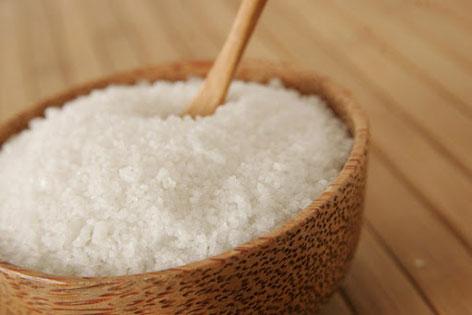In a study of 238 children aged 5 to 13 years, seven in ten exceeded the recommended upper limit for sodium, or salt.
Professor Caryl Nowson, who is presenting the data this week at the International Congress of Dietetics in Sydney, said on average children are eating around six grams of salt a day, about a level teaspoon full, which is four times more salt than they need.
"We know that a high salt intake pushes up blood pressure, and that’s linked with serious conditions like heart disease and stroke."
She also said a high salt intake may contribute to obesity risk, as salty foods increase thirst and drive intake of calorie-rich sugary drinks, such as soft drinks.
The maximum salt intake (upper level) for children aged from 1-13 years is 1 – 2g per day (well under one teaspoon per day).
So what do parents need to do to limit their child’s salt intake?
The Dietitian Association of Australia recommends....
Parents:
- Look out for packaged foods with less than 120g/100g sodium.
- Compare food labels and choose those lower in sodium
- Look out for ingredients such as rock salt, sea salt, garlic salt, seasoning and MSG, as these are all common names for salt.
- Choose products which have ‘reduced-salt’ written on the label.
Children enjoy a wide variety of nutritious foods such as:
- Eat plenty of vegetables, legumes and fruit.
- Eat plenty of cereals (including breads, rice, pasta and noodles), preferably wholegrain.
- Include lean meat, fish, poultry and/or alternatives.
- Include milks, yoghurts, cheese and/or alternatives. Reduced-fat milks are not suitable for young children under 2 years, because of their high energy needs, but reduced-fat varieties should be encouraged for older children and adolescents.
- Choose water as a drink.
Naturally, the above foods will contain all the salt a child should need without having to ‘add’ salt into the diet.
Fish fingers and other foods which contain higher levels of salt should be kept as ‘sometimes’ foods in a child’s diet.
75 per cent of salt intake comes from processed foods. Therefore DAA recommends fresh is best when it comes to kids nutrition.
Some healthy lower-salt snacks include:
- Fresh fruit or fruit smoothies
- Vegetable sticks with hummous or Tsaziki
- Boiled eggs
- Yoghurt and cheese stick
Visit the Dietitians Association of Australia’s website: www.daa.asn.au for more information on healthy eating for children.



















__small.png)










